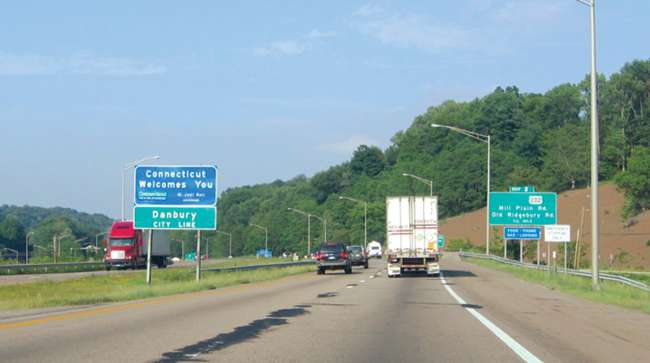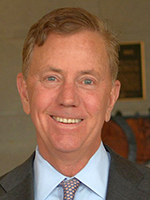Staff Reporter
Connecticut Gov. Ned Lamont Pivots From Truck-Only Toll Plan

Connecticut Gov. Ned Lamont has suggested a tolling program that would affect both cars and tractor-trailers, shifting away from an earlier pledge to only toll trucks.
In an op-ed piece published in the Connecticut Post on Feb. 16, Lamont indicated that tolling both cars and trucks was the fastest and most effective way to raise money for infrastructure projects to address congestion. Lamont identified Interstates 95, 91, 84 and the Merritt Parkway as key routes linking Boston and New York that suffer crippling congestion.
Lamont claimed he would only consider this tolling option if the state maximized a discount for Connecticut EZ-Pass users and presented a “frequent driver” discount for people who regularly travel on major roadways.

Lamont
“We have been subsidizing our neighboring states’ road repairs by paying their tolls and it’s estimated that out-of-state drivers would provide nearly 50% of our tolling revenue as well,” Lamont said in the op-ed.
Previously, Lamont touted a truck-only tolling plan similar to the one used in Connecticut’s neighbor, Rhode Island, which made two (of an eventual 13) truck-tolling gantries operational on June 11 in Hopkinton and Exeter.
Rhode Island’s truck tolls have stoked the ire of the trucking community. A lawsuit filed July 10 by American Trucking Associations, Cumberland Farms Inc. and M&M Transport Services Inc. contests the constitutionality of the truck-only tolls on grounds the levy discriminates against interstate commerce.
New England Motor Freight also was part of the joint lawsuit but has since declared it is seeking Chapter 11 bankruptcy protection and will shut down operations.
RELATED: New England Motor Freight shutdown shakes less-than-truckload freight market
Lamont acknowledged that a truck-only tolling system in Connecticut would provide enough funds to maintain the road system, but not enough to upgrade it.
“While we are awaiting a ruling from the courts regarding truck-only tolling, our attorneys are pretty certain that if permitted, the tolling could only be done on specific bridges and the generated revenue would be reserved for those bridges, not for congestion pricing,” Lamont said in the column. “Assuming our attorneys are correct, the truck-only option provides too little revenue, too slowly and too piecemeal to make a meaningful difference.”
The Connecticut Department of Transportation released a study Nov. 14 which stated that electronic tolls posted on highways throughout the state could raise nearly $1 billion a year. The analysis presented a hypothetical system in which tolls were collected from in-state and out-of-state drivers, but rates were lower for Connecticut-based drivers and passenger vehicles.
Motor Transport Association of Connecticut President Joe Sculley, also an opponent of truck-only tolls, said the trucking community can take a modicum of solace in knowing that the governor’s new plan would impact both trucks and automobiles.

Sculley
“The Connecticut trucking industry was going to get hit with massive costs either way, whether it was truck-only or everybody,” Sculley said. “Now that it’s being expanded to include passenger cars, we in the industry have allies now to fight against this. People are really fired up about this, as they should be.”
Lamont eschewed plans for tax hikes and priority bonding, stating Connecticut needs a “debt diet.”
ATA continues to push for increased fuel tax rates instead of tolls as a way to raise money for infrastructure. In an op-ed published in the Washington Examiner Feb. 19, ATA President Chris Spear recommended the Build America Fund as the most immediate and cost-effective way to fund infrastructure improvements.
The Build America Fund would be supported by a 20-cent-per-gallon fee incorporated into the price of transportation fuels gathered at the pump at 5 cents per year over four years. This fee would be indexed to inflation and improvements in fuel efficiency with a 5% annual cap. The plan could generate $340 billion.
“Collection costs are less than 1% of revenue. It will not add to the federal debt or force states to resort to detrimental financing options that could jeopardize their bond ratings,” Spear wrote. “Compare this to the high cost of ‘public-private partnerships’ — a code term for tolling — where as much as 33% of revenue generated is wasted on administrative, collection and enforcement costs.”
Lamont, who was elected Nov. 6, presented his budget to the General Assembly on Feb. 20.
“There is no doubt in my mind that our transportation fund will require additional strategic and recurring revenues in the very near future,” Lamont said.


